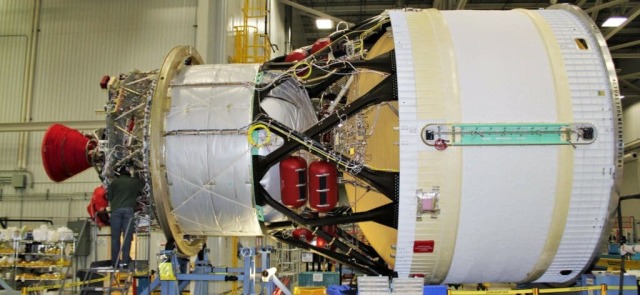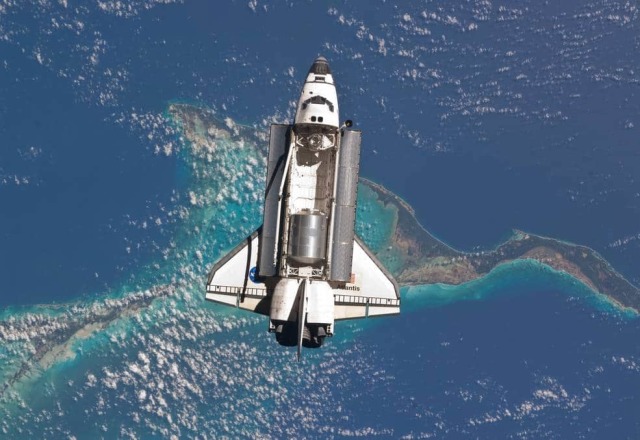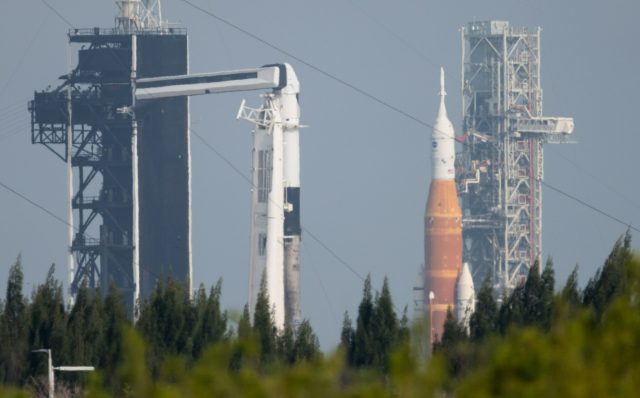The Space Launch System rocket and space program has already gathered almost more criticism than the long-suffering F-35. They complain about the incredible high cost, the use of controversial technical solutions and the regular postponement of the first launch. Now, when, it would seem, everything is ready for launch, the rocket is again removed to the hangar for improvements. How long the new delay will be is an open question.
The giant SLS rocket, designed for the first mission under the Artemis program, has been standing on the LC-39A launch pad for a month Kennedy Space Center. During this time, the Exploration Ground Systems division (EGS, ground support systems for research missions) The US National Aeronautics and Space Administration (NASA) has made three attempts at a "wet dress rehearsal" of the launch.
During such tests, a full range of operations corresponding to the launch is performed, the rocket is only not "released" from the launch pad. In the case of Artemis I, the engines are also not being launched, they were tested as part of the first stage at the stand of the John Stennis Space Center in Mississippi. Although not everything went smoothly there either, the specialists were satisfied with the parameters of the RS-25, so they were recognized as airworthy. But on the LC-39A, a series of troubles does not think to stop.
At first, the weather put sticks in the wheels, but on April 3, finally, the rehearsal began. And stopped before the start of refueling with fuel components. There is a problem with special fans that blow through the structure of the mobile launch platform (MLP) so that flammable and dangerous gases do not accumulate there. This is a superstructure over a tracked transporter carrying the SLS rocket (and before that, the Space Shuttle and Saturn V) — an integral part of the ground infrastructure.
The tests were postponed to the next day, the fans were repaired. On Monday, April 4, EGS specialists were able to reach the refueling of the first stage with liquid hydrogen. But also not without hitches. There was a problem with the supply of nitrogen to the site from the plant outside the launch complex: it took several hours to solve it temporarily. After the start of refueling with liquefied oxygen in a fast mode (slow and cooling of all highways go first), it was the turn of hydrogen. But one of the drainage valves was blocked in manual mode. Naturally, no one would allow people to go to the rocket, when almost half of the oxidizer was poured into the oxygen tank, so the rehearsal was postponed, and oxygen began to be drained.
After partial, but still refueling with cryogenic fuel components, the design required inspection, so it was impossible to plan tests for the next two days. However, then the SLS began to conflict over the spaceport with the SpaceX — Falcon 9 rocket for the Ax-1 mission, which was scheduled to launch on the eighth. And, by the way, it went great. And the "wet dress rehearsal" of Artemis I was scheduled for April 11 with the start of the full cycle of preparation already on the ninth. Meanwhile, on April 6-7, difficulties were revealed with maintaining the pressure of the pressurization gas (helium) of the ICPS second stage tanks. Later, the culprit turned out to be a faulty valve. Because of this test, they " left to the right " again, for another three days.

Paradoxically, the notorious ICPS, due to a faulty valve of which a large delay is partly now occurring, is perhaps the simplest, most understandable and proven component of SLS. Technically, the Interim Cryogenic Propulsion Stage is a cryogenic second stage of Delta III and IV rockets with minimal changes. Moreover, this component of the entire rocket was ready before the others: the stage now installed on Artemis I arrived at the Kennedy Space Center, being ready for integration into the carrier, more than three years ago
Image Source: NASA
Moreover, the test program was changed so that the faulty valve of the second stage did not have to be activated. Simply put, the new plan was simple: not to refuel ICPS, but only to cool its pipelines with small amounts of liquid oxygen and hydrogen. Fortunately, almost always all places of leaks become noticeable at this stage. The fact is that the replacement of a faulty part is, of course, inevitable and will not even take too much time, but for this the entire rocket will have to be taken to the hangar for assembly (VAB). That is, another day for transportation there, some repair period, and then another day back. It is better to conduct a rehearsal, even if not in full, but to identify potential weaknesses in other systems. And so it happened.
On the morning of April 14, the third attempt to hold a start rehearsal began. Oxygen was again filled almost half, although again not without problems — at the stage of slow supply (at the beginning of the process), the pressure and temperature fluctuated abnormally. And the refueling was delayed due to another problem with the supply of nitrogen. Then they began to supply hydrogen, but quickly stopped this business: there was a leak in the node connecting the refueling lines to the rocket on the mobile launch platform. On that day, NASA employees also checked the ICPS refueling, but did not do anything else globally. The fuel was drained, the rocket was left alone, and everyone went together to decide how best to proceed.
The final verdict is promised to be announced at a press conference today, at 21:00 Moscow time, but it is already known. As the SpaceNews portal writes with reference to the agency's press service, the SLS will be returned to the VAB hangar. They will fix all the problems there, replace the notorious valve and once again prepare the carrier for launch. But whether there will be another attempt at a dress rehearsal is an open question. Most likely, yes, but because of these delays, the flight may move to the second or third launch window. Currently, Artemis I has three date ranges due to orbital mechanics, when it will be possible to get to the Moon: from June 6 to June 16, from June 29 to July 17 and from July 26 to August 9.
Almost certainly, NASA does not get into the first launch window: given the "promptness" of all work on SLS, it is unlikely that existing problems will be solved faster than in a month. And there are still two or three weeks of preparation for the start. In general, time is tight. But July looks more realistic. August is even more so.

A picture of the shuttle "Atlantis" taken from the ISS during its docking. The last Shuttle mission, STS—135, ended on July 21, 2011
Image Source: NASA
In fairness, it is worth noting that for all three, albeit incomplete, but still quite detailed "almost combat checks" of critical problems in SLS not identified. The main troubles are from ground equipment, except for the valve for checking the helium pressure at the second stage (and it is only one of the insurance systems). So laughter is laughter, and 11 years later, after the completion of the operation of the entire rather worn-out infrastructure for the Space Shuttle, it was not only restored, but also adapted to the rocket of the new configuration without serious excesses. Yes, SLS is a "prefabricated hodgepodge" of solutions that have already been used, but they are put together differently, so it will not be possible to simply tuck in old hoses with wires.

